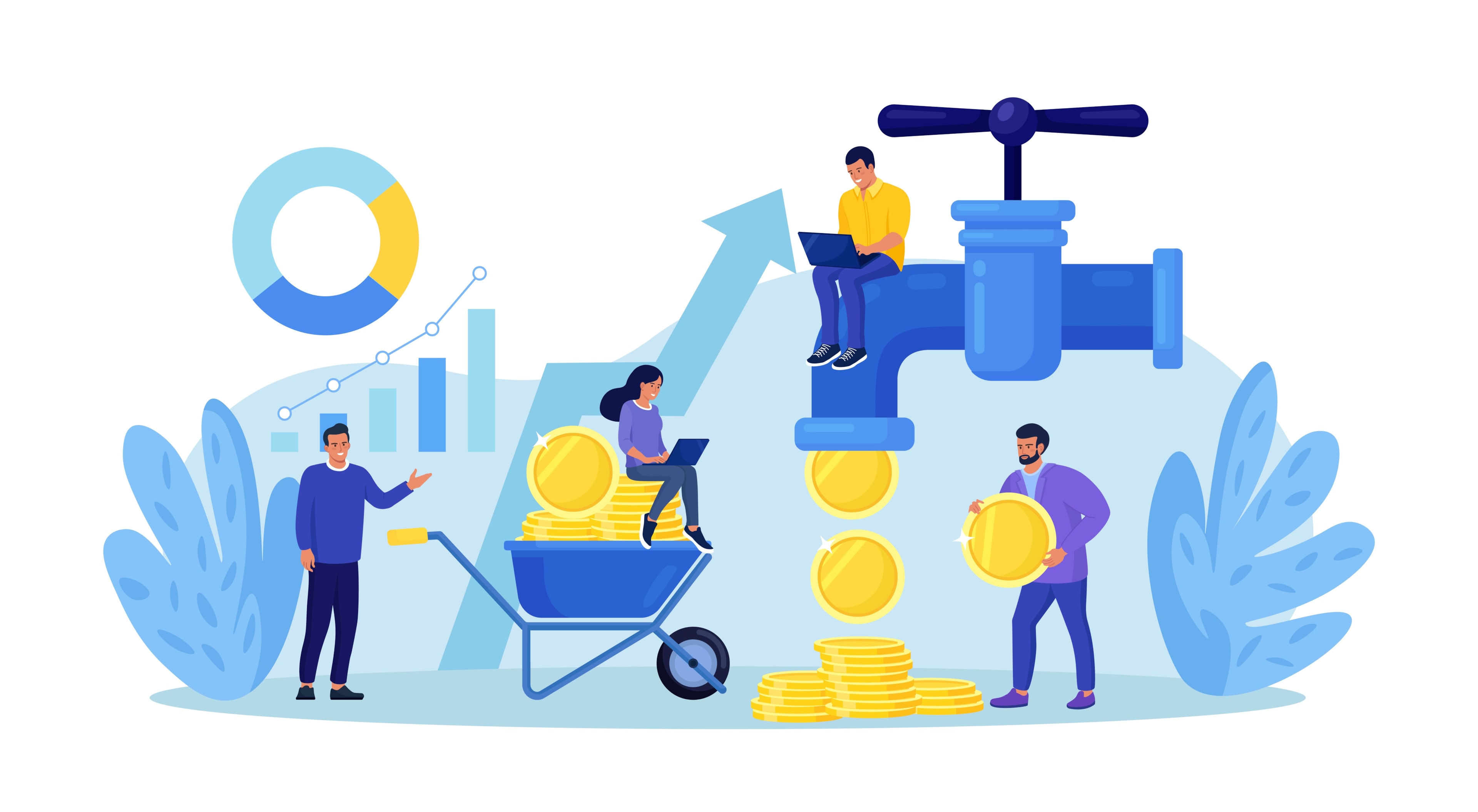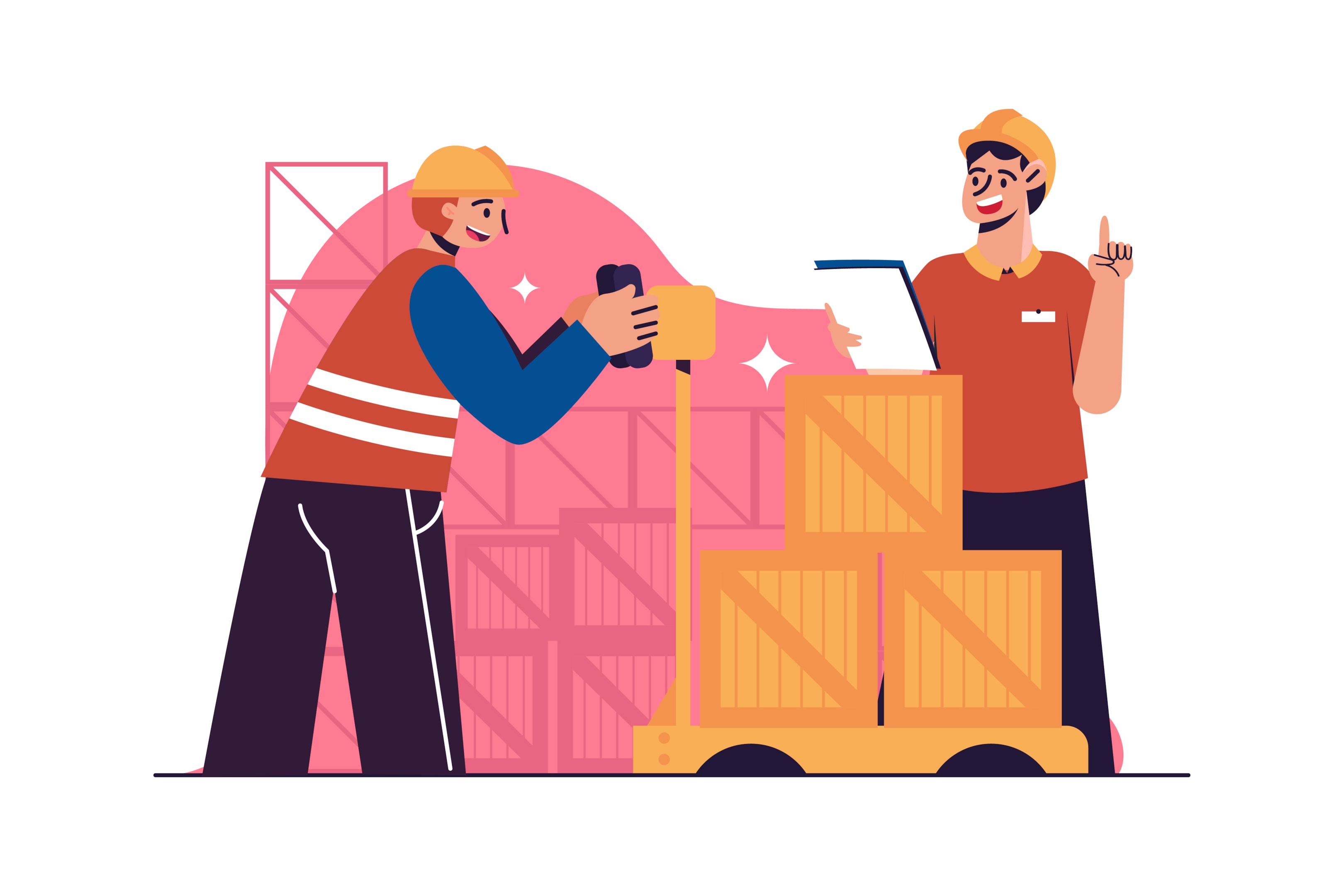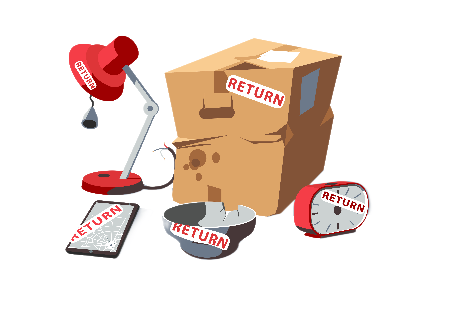Returns are no longer just an operational cost – ecommerce returns optimization has become a strategic battleground that can determine ecommerce success or failure. In 2024, shoppers returned nearly $890 billion worth of products, with online returns outpacing brick-and-mortar by almost double. The stakes are high: each return costs merchants on average $100, and online return rates hover around 16.9%, soaring to 30% during peak seasons.
But returns don’t have to be just a profit drain. When handled right, they can transform into a powerful driver of customer loyalty, brand differentiation, and operational efficiency. This guide unpacks the full picture of returns process optimization in 2025 – from understanding what returns optimization really means, to concrete solutions, implementation strategies, product-specific considerations, and measurable business impacts related to ecommerce returns process.
What Is Ecommerce Returns Optimization?

It is the strategic returns process of minimizing the costs and negative impacts of product returns while maximizing customer satisfaction and retention. It involves improving every step of the returns journey – before purchase, at return initiation, during processing, and after reintegration into stock control – to reduce unnecessary returns and extract value from unavoidable ones. Effective businesses also manage returns proactively to optimize this flow.
Returns optimization is about:
- Preventing returns by better informing customers and stating returns policy clearly
- Streamlining and automating return logistics
- Using return data and AI to predict and reduce returns
- Managing fraud risk without alienating customers
- Implementing sustainable, profitable recommerce options
This approach to ecommerce supply chain management requires a shift in mindset from seeing returns as a necessary evil to viewing them as an opportunity to strengthen customer expectations and operational agility.
Customer Experience: The Impact on CLV
For example, brands that design frictionless returns polic often see a lift in customer lifetime value (CLV) because shoppers feel confident purchasing from a company that “has their back.”
In contrast, companies with cumbersome or unclear returns policy and e commerce returns management risk losing customers permanently after just one poor return experience. Offering free returns and even free return shipping encourages customers to shop with confidence and builds goodwill.
The Real Impact of Returns on Profitability

Returns management affect profit in many visible and hidden ways:
- Direct cost per return: On average, it costs about $100 to process a return. This includes shipping costs both ways, labor for handling and inspecting items, repackaging, and restocking fees.
- Lost resale value: Returned items often lose 10-20% of their retail value, especially if packaging is damaged, the item is out of season, or has been used. This depreciation can be much higher in categories like apparel or electronics.
- Inventory complexity: Returns disrupt inventory and ecommerce returns management records, causing discrepancies that lead to overselling or stockouts. This results in lost sales or the costly process of order cancellations and refunds.
- Customer service overhead: Handling return inquiries demands significant human resources. Negative interactions during returns process contribute heavily to customer churn.
- Fraud losses: Return fraud, including tactics such as returning empty boxes, used items, or fake products, affects more than 90% of retailers and costs an estimated €10 for every €100 in returns.
- Reputational damage: Over 50% of negative seller reviews relate to difficulties with refunds or returns. Negative word-of-mouth and social media complaints further erode brand equity.
Considering these factors together, the total cost of returns can consume anywhere from 20% to 65% of an item’s original value, making returns process optimization a critical profit center rather than a back-office headache.
How to Reduce Returns: Tools and Techniques

Reducing the percentage of returns requires a multi-faceted approach targeting the root causes and operational friction points:
1. Prevention Through Enhanced Product Information

The most effective way to reduce returns is to help customers make better-informed decisions before they buy. This means investing in product content that removes uncertainty and sets realistic customer expectations.
- Detailed product descriptions should cover sizing (including fit guidance), materials, functionality, and care instructions.
- Multiple high-resolution images from different angles, zoom options, and lifestyle shots showing the product in real use.
- Videos and demos where applicable, like showing apparel movement or product assembly.
- User-generated content (UGC) like reviews with photos, questions, and answers help provide real-world perspectives for online stores.
Amazon’s A+ Content program is a prime example, where enriched product listings with rich visuals and detailed specs have shown to lower return rates significantly. Similarly, brands that encourage customers to upload photos and honest feedback online build trust and reduce ambiguity.
By reducing uncertainty upfront, online shoppers feel confident in their purchase decisions, dramatically decreasing “buyer’s remorse” returns and thus making it easier to deal with ecommerce returns management.
2. Leveraging AR and Virtual Try-On Technology
Augmented reality (AR) and virtual try-on tech bring a new dimension to prevention by allowing customers to visualize products in their environment or on themselves before buying.
- Fashion retailers use AR mirrors or apps for customers to virtually try clothes, shoes, and accessories. This reduces fit-related returns caused by size or style mismatches.
- Furniture brands allow shoppers to project 3D models of sofas, tables, or decor items into their living space using smartphones, ensuring the product fits and matches their style.
- Beauty brands offer virtual makeup try-ons using face mapping to help customers select the right shade and product.
These technologies are rapidly becoming more affordable and easier to implement into online stores. Retailers integrating AR report measurable reductions in size and expectation-related returns, as well as increased conversion rates due to higher purchase confidence.
3. AI-Driven Returns Process Automation

Artificial intelligence is revolutionizing e commerce returns management by cutting processing times and improving accuracy.
- AI can automatically classify return reasons, prioritize cases, and generate return labels.
- Machine learning models detect fraud by identifying suspicious patterns such as unusually high return rates from individual accounts or certain products.
- AI predicts which products or orders are more likely to be returned before shipment, enabling preemptive actions like offering alternate sizes or detailed guidance.
- Automated routing ensures returned items go to the optimal processing center, maximizing resale potential or refurbishment.
By reducing manual intervention, AI decreases handling and shipping costs by up to 50% while improving customer satisfaction through faster processing and clearer communication. This has a positive impact on the overall ecommerce returns management process.
4. Omnichannel Returns Solutions (Buy Online, Return In-Store – BORIS)

BORIS programs allow customers to return online purchases at physical stores, merging digital and physical retail strengths.
- This saves on costly reverse logistics by cutting out return shipping.
- Customers get immediate refunds or exchanges, or store credit, reducing waiting time and increasing satisfaction.
- Retailers gain a chance to upsell or cross-sell during in-store visits.
Retailers often leverage store credit strategically to encourage repeat purchases, turning returns into new sales opportunities while improving cash flow. This solution bridges the gap between brick and mortar and ecommerce, creating a seamless customer experience.
5. Advanced E commerce Returns Management Platforms
Specialized platforms like Happy Returns, Loop, and AfterShip streamline the entire e commerce returns process:
- Centralizing returns from multiple channels (online marketplaces, own webstores, physical outlets).
- Automating customer communication and notifications.
- Providing analytics dashboards showing return rates by SKU, customer segment, and return reasons.
- Facilitating easier ecommerce returns through drop-off points, pre-paid labels, or box-free returns.
Such platforms improve transparency for both customers and retailers, helping reduce friction, improve returns policy and drive continuous process improvements.
6. Fraud Prevention and Risk Management

Return fraud is a costly challenge but must be balanced with customer experience.
- Automated tools monitor return frequency, timing, and value patterns.
- Segmentation allows tailored policies: low-risk customers enjoy fast processing, while suspicious cases undergo verification.
- Clear, communicated consequences for fraudulent behavior deter abuse.
Balancing protection and convenience is key to maintaining loyalty while safeguarding profits.
7. Sustainable Returns Practices and Environmental Impact
Consumers increasingly value eco-friendly business practices, influencing their buying choices.
- Eliminating preprinted return labels reduces waste; print-on-demand systems print labels only when needed.
- Carbon neutral shipping initiatives show commitment to sustainability.
- Recommerce or resale of returned goods through outlet stores or third-party platforms recaptures value.
- Donating unsellable returns to charities can offer tax benefits and social responsibility goodwill.
Sustainability programs help brands stand out and often reduce associated costs, making them a win-win for business and planet.
How to Implement Returns Optimization Solutions

Effective implementation is a phased journey that balances impact with ease:
Step 1: Clarify and Communicate Return Policies
Transparent policies build trust and reduce friction:
- Use simple language and FAQs to explain timelines, accepted conditions, and refund types.
- Display policies prominently during checkout and on product pages.
- Consider customer-friendly policies like extended return windows or free returns, especially during holidays.
Clear policies reduce confusion and customer concerns, limit negative feedback, and encourage purchase confidence.
Step 2: Upgrade Product Information
Develop enriched content at scale:
- Collaborate with product teams, photographers, and online shoppers to create accurate descriptions and visuals.
- Leverage UGC by encouraging reviews and customer photos.
- Audit listings and returns policy regularly to ensure accuracy and update seasonally.
This foundational step requires relatively low technical effort but offers high ecommerce returns in fewer customer returns.
Step 3: Deploy Basic Automation

Start automating return workflows:
- Integrate return label generation with orders.
- Set up automated email/SMS notifications for return status updates.
- Sync systems like on-demand warehousing for real-time stock adjustments and inventory management.
Automation saves labor and improves customer experience with timely communication.
Step 4: Integrate AI and Predictive Analytics
Once basics are stable, adopt AI tools:
- Use predictive models to flag high-risk returns and offer proactive support.
- Implement fraud detection and segmentation.
- Employ AI for smart routing of ecommerce returns.
This step requires investment and expertise but pays off in efficiency and loss reduction.
Step 5: Expand Omnichannel and Sustainable Practices

Explore BORIS options, recommerce partnerships, and eco-friendly logistics:
- Pilot BORIS in regions with physical stores.
- Build relationships with recommerce platforms.
- Implement print-on-demand labels and waste reduction initiatives.
Align solutions to your product types and customer values.
Step 6: Continuously Measure Customer Feedback
Track KPIs like return rates, processing times, revenue retention, customer satisfaction, and fraud rates. Use customer feedback to uncover pain points and test improvements in small, iterative cycles.
Product Categories That Benefit Most from Returns Optimization

- Fashion and Apparel: High return rates (up to 30%) due to fit uncertainty and trend sensitivity. Tools like virtual try-on, detailed sizing charts, and AR greatly reduce customer returns.
- Footwear: Similar challenges with fit and comfort make enhanced product info and try-on tech critical.
- Furniture and Home Decor: Visualizing size and style in one’s space avoids costly bulky returns.
- Electronics: Fraud prevention, technical inspection, and refurbishing processes mitigate risks and losses.
- Beauty and Cosmetics: Virtual try-ons help consumers pick shades and products matching their skin tone.
- Seasonal and Gift Items: Surge in returns post-holiday demands scalable and flexible returns management process solutions.
Measuring Returns Optimization Success

Effective measurement of online orders requires tracking multiple interconnected metrics. Return rate – returned items divided by total retail sales – provides a baseline, but deeper analytics reveal optimization opportunities.
Revenue retention measures how successfully ecommerce returns convert to exchanges or store credit rather than refunds. This metric directly impacts cash flow and profitability, making it crucial for business health.
Processing time reduction demonstrates operational efficiency improvements. The efficiency of these processes is heavily dependent on the underlying logistics framework, which is why many businesses opt for specialized 3PL fulfillment services for e-commerce. AI and automation typically target 50% reductions, but the specific impact varies by complexity and current processes.
Customer lifetime value comparisons between easy and difficult return experiences quantify the business impact of customer satisfaction. These metrics often justify significant investments in returns optimization by demonstrating long-term value creation.
Key Performance Indicators for Success
| Metric | Target | Impact |
|---|---|---|
| Return Rate | Below industry average (16.9%) | Cost reduction, efficiency |
| Processing Time | 50% reduction from baseline | Operational efficiency |
| Revenue Retention | Maximize exchanges vs. refunds | Cash flow, profitability |
| Customer Satisfaction | >90% positive return experiences | Loyalty, repeat business |
| Fraud Detection | <5% fraudulent returns processed | Cost protection |
Cost per return tracking reveals the total expense impact, including shipping, labor, restocking, and opportunity costs. This comprehensive view enables accurate ROI calculations for optimization investments.
Customer feedback specific to the ecommerce returns process provides qualitative insights that complement quantitative metrics. This feedback often reveals friction points that data alone might miss.
Technology Integration Strategies

Modern returns optimization requires seamless integration across multiple systems. For brands fulfilled by TikTok or managing multi-channel logistics, seamless coordination is key.
API-based Integrations
API-based integrations enable real-time data flow between systems, preventing the lag times that create customer frustration and operational inefficiencies. When a return is initiated, inventory management systems should immediately reflect the pending return, customer service teams should have full visibility, and shipping labels should generate automatically.
The goal is creating a unified commerce experience where returns data flows seamlessly across all touchpoints. This integration supports both warehouse operations and strategic decision-making based on comprehensive returns data.
Building a Reverse Logistics Network
Effective reverse logistics process design considers the entire journey from return initiation to inventory management and reintegration. This includes customers pickup or drop-off options, transportation to processing facilities, inspection and sorting, and redistribution to sales channels.
Geographic considerations play crucial roles. Centralized processing may reduce per-unit costs but increase shipping distances and times. Regional processing centers can improve speed but require higher infrastructure investments.
The optimal approach to returns policy depends on business scale, product characteristics, and customer distribution. Fashion retailers might prioritize speed to capture remaining seasonal value, while electronics companies might focus on thorough testing and refurbishment processes.
Future of Returns Optimization

Future returns optimization will evolve dramatically with technology and shifting consumer expectations:
- Predictive analytics will proactively minimize returns by identifying at-risk orders and offering alternatives or extra info.
- Virtual try-on and AR will become ubiquitous across product categories, setting a new standard for future customers and existing ones.
- Marketplace SEO and circular models will turn returns into ongoing revenue streams through recommerce and refurbishment.
- Unified commerce platforms will break down silos, enabling seamless returns across all sales channels with full visibility and control.
The winners will be retailers who treat returns as a strategic asset, continuously innovating to delight customers and protect profit margins.
Conclusion
Returns optimization is a critical growth lever in ecommerce today. The challenge lies not just in reducing ecommerce returns but in transforming the returns management experience into a key driver of customer loyalty and operational excellence.
By starting with clear returns policy and rich product information, then layering AI automation, omnichannel returns, fraud management, and sustainability practices, retailers can turn returns into a competitive advantage. The future belongs to those who can manage returns and see them as opportunities to build trust and deepen customer relationships – resulting in fewer returns and more purchases over time.



 Community
Community
